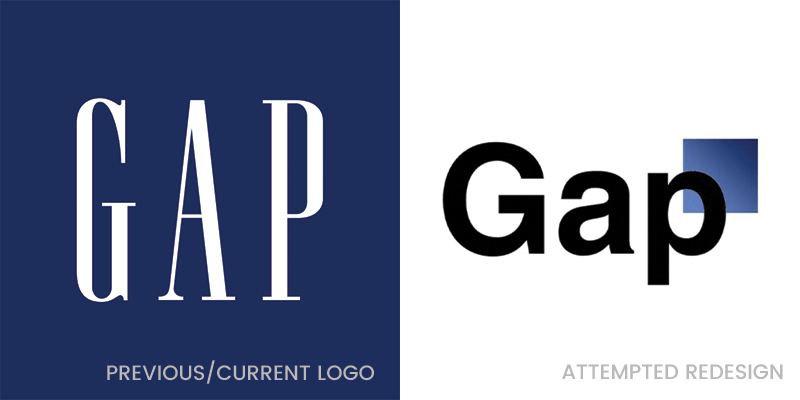 It’s nearly impossible to create a memorable brand without the necessary visual elements such as your company logo. Because of the close knit bond between design and branding, we felt it was important to share how design can impact your brand and what specific design elements matter most. While some companies may try to skate by without a consistent or clear visual brand, you’ll find that the powerhouse companies out there (including Facebook, Apple, Tiffany & Co., Google, Amazon, and Starbucks) all put tremendous effort into their visual branding strategy and thus have a unique identity that is familiar to most.
It’s nearly impossible to create a memorable brand without the necessary visual elements such as your company logo. Because of the close knit bond between design and branding, we felt it was important to share how design can impact your brand and what specific design elements matter most. While some companies may try to skate by without a consistent or clear visual brand, you’ll find that the powerhouse companies out there (including Facebook, Apple, Tiffany & Co., Google, Amazon, and Starbucks) all put tremendous effort into their visual branding strategy and thus have a unique identity that is familiar to most.
The impact of design on a brand
Design elements including a logo, color scheme and font selection show up across the board including on your marketing collateral, website, as well as digital and print ads. These carefully chosen elements give personality to a brand so that consumers form a connection, build trust and ultimately make a purchase. The design aspect of your brand essentially tells the story about your company graphically, using minimal words. Keep in mind that the elements chosen can make or break the impact that a brand has amongst its potential customers. So it’s not just about throwing together a logo and typing the company name – it’s an in-depth process of research and testing that takes into account your audiences’ preferences, your offerings, and the story you want to tell. When done correctly (and we highly recommend hiring a professional graphic design and branding company!), your brand becomes a recognizable entity that appeals greatly to those who you most want to purchase your products or services.
How to design a thoughtful brand
While the most significant and commonly discussed aspect of a brand is the logo, there are in fact many elements that comprise a thoughtful brand. Rather than splashing together a design without much forethought, we will share a method to bring the most important components together and help you plan and design a brand that will have maximum impact and reach amongst your audience.
Phase 1: Research and feedback
In this first phase, it’s going to be extremely important to understand your target audience and the impact you want your brand to have. A designer can create a beautiful logo but if it’s not aligned with your potential and current customers, the result could actually mean a drop in sales. So rather than wasting time and energy with design as a starting point, you want to do major research into your industry as a whole, your audience and also your own internal operations. Ask for feedback, see what your potential customers are looking for and what they expect from your company. This will shape how you design your crucial branding elements.
Phase 2: Hire a professional graphic design company to prepare your logo and branding guidelines
Let’s say that you’ve thrown together a logo in a free design program and over the years have used different fonts and colors when creating ads or packaging. Now is the time to take the next step and develop a professional and consistent brand. In a previous blog we reviewed the importance of branding guidelines and we want to stress again that having a professional team of graphic designers and brand experts can be the difference between amateur and pro when it comes to developing a brand that best suits your company. Not only will this investment create more ease within your business (less time and energy spent creating ads and other marketing materials), but you’ll likely see an increased awareness of and interaction with your brand! Why? Because consumers crave a clean, polished and easy to recognize brand.
Phase 3: Enforce your new branding elements across all channels
Once you have your new brand design elements in hand, you want to make certain that every channel of your business gets updated. This includes your website, digital and print ads, all marketing materials, social media graphics and even your internal systems. The reason being, you want your customers and even your team members to see the consistency. This creates the recognition and authority critical to becoming a well-known brand. If your company has recently done a rebrand, we highly suggest going through this process to ensure that all aspects are updated with your new branding elements so there’s no question in identity.
Phase 4: Stay connected to your audience and welcome the feedback
Understanding how your audience perceives your new visual brand is critical to ensuring that what you’ve designed will have the impact you desire. There have been a few companies in the past like Gap for example that have unsuccessfully launched a new logo design.

Of course, preventing this from happening should take place during phase one when you’re doing the research required to know your target audience. However, feedback even after the launch is going will also be helpful. Even after a successful visual branding experience, it’s the ongoing feedback that determines how brands evolve over time in order to stay relevant to their existing and new customers.
As always, if you’re looking for a graphic design team and branding professionals to build your visual brand, be sure to reach out to us. Our team is here to help! Call 508-652-0012 or request a free quote.

